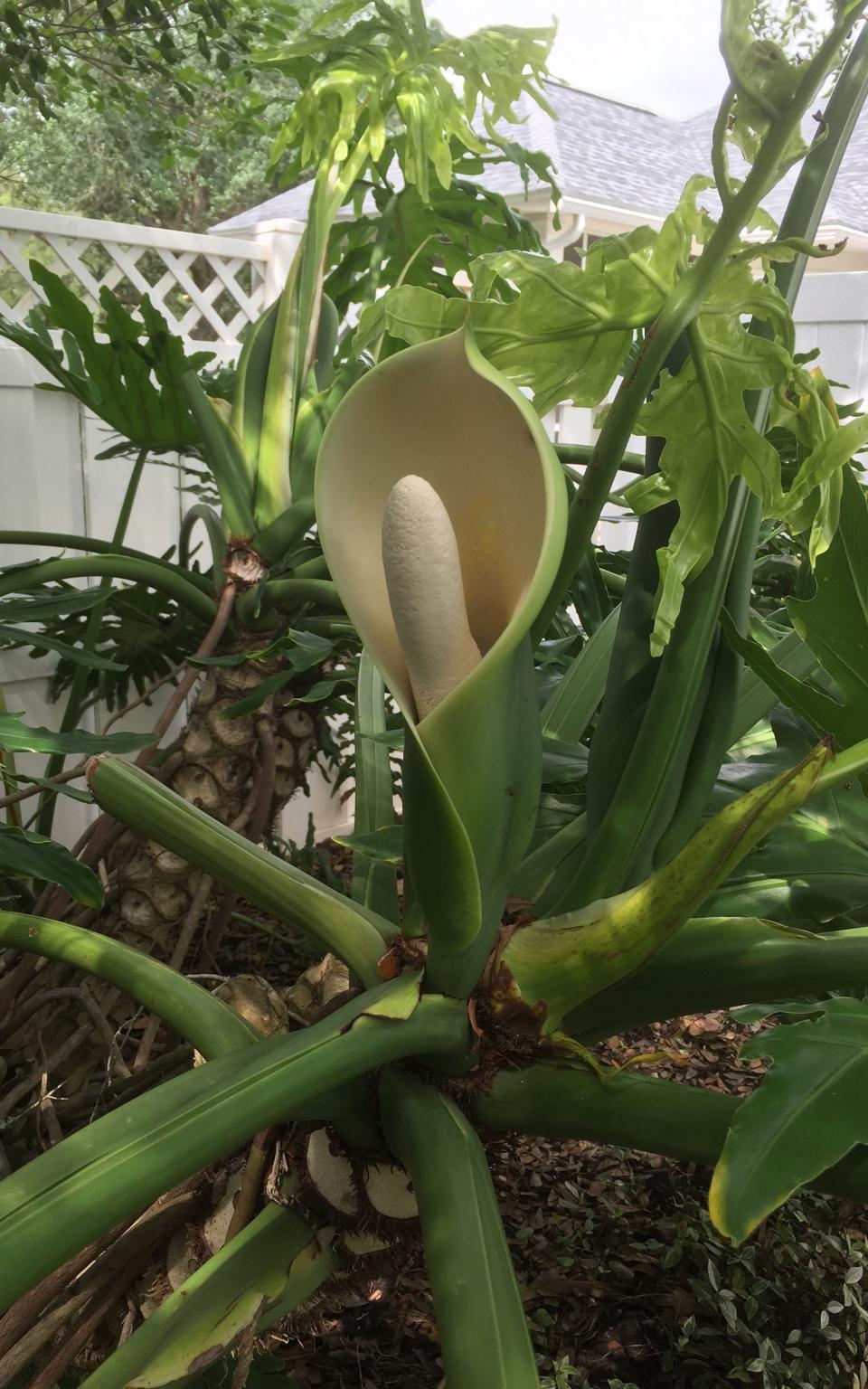A Stroll Through the Garden: What to do when your split-leaf philodendron is sick
In the early 1980s I lived for a portion of time in Knox County. My dad loved my mother a great deal and did something unusual in the back yard. He built a greenhouse. The greenhouse was not that big, so we approached this as a hobby. All of us in our family had a talent for taking care of plants and enjoyed the work, especially in the winter.
What we found was, many people enjoyed the way we would care for plants. We would take cuttings and grow them into what would become a focal point in any setting. One of the exciting things we would do for some our clients is to have something in bloom all year long.
We would make spectacular settings in the entryway of a variety of buildings. In a foyer of a church, we made a mini-jungle settings. People would gather around these settings in conversation, talking about God’s creation in the plants in this church.
A philodendron vine 60 feet6 long with leaves 3 feet tall and 30 inches across
Split-leaf philodendron or Monstera deliciosa is a native to the tropical forests of Southern Mexico and south to Panama. Our Central American native can be aggressive and has become an invasive specie of plant in a number of tropical islands. I want you to picture this in the jungles of Central America. You can find these beautiful vines growing to 60 feet long. Wow, right? The leaves can get as big as 3 feet tall by 30 inches across.
One of my Facebook friends who loves plants and serves as a place for people to talk about her passion for tropical plants asked me about why her plant’s leaves were yellow. When I was looking at plants in the plant rental sites we cared for many years ago, we usually had several answers to any challenge, including removing the plant from the site. Frequently we would solve the challenge while the plant was still installed.
With the huge west window in this church and great areas for the plant settings we did have some very dry areas that we had to care for some of these split-leaf philodendrons. Bottom line is that we did see these yellow leaves regularly until we welded together some tubs that were 6 inches tall. With the huge amount of water under each of the pots, we found that the plague of yellow leaves was done.
Plant woes may be due to several factors

Yellow leaves in split-leaf philodendron can be the result of improper watering, improper light conditions, nutrient deficiency or insects. Improper watering is the usual reason for the yellowing leaves. If your monstera is overwatered, you’ll see leaves yellowing from the bottom up first. You’ll also want to check the soil to see if it still feels wet after you watered. Soil that is compacted will not allow the water to drain in a fashion that the plant health requires. This was usually the reason I would repot a plant.
What reveals the need for repotting is that if you watered the philodendron more than a week ago and the top few inches still feels wet. Or if you have a water meter and it reads higher than four your soil may not be draining well, which leads to overwatering. Underwatered philodendrons that have yellow leaves will have yellow leaves all over the plant rather than concentrated in one area.
Brown spots may also appear on the leaves. If the top of your plant feels bone dry it probably needs water. When your philodendron has a meter reading of lower than three, it’s time to water.

Because we are looking at a jungle plant, we need to understand it does best in indirect sunlight. Afternoon and strong midday sun directly on this jungle plant can scorch the leaves which will show up as yellowing. Compacted soil in the pot combined with too little light can also increase the chance for yellow leaves. Grow lights can be used to supplement light as it is needed.
Fertilizing philodendrons improperly also can cause yellow leaves. Since the philodendron is a house plant, you will need to fertilize the plant with a complete fertilizer including nitrogen and follow the instructions.
Changing watering habits could solve the problem
Most of the time you just need to change your watering habits to allow for the yellow leaves to disappear. The best soil for your plant is a light soil with cactus soil, perlite, vermiculite, or sand making the mix easier to drain. This is the time of year to repot many different plants.
Hope you have a great stroll through your garden this week. If you have a challenge, drop me an e-mail at ericlarson546@yahoo.com I shall do the best I can to help. Soon I shall start putting these columns on my website at ohiohealthyfoodcooperative.org.
Eric Larson of Jeromesville is a veteran landscaper and gardening enthusiast and a founding board member of the Ohio Chapter of Association of Professional Landscape Designers. He encourages your gardening questions by sending an email to ewlarson546@yahoo.com.
This article originally appeared on Mansfield News Journal: A Stroll Through the Garden: Yellow leaves on split-leaf philodendrons

